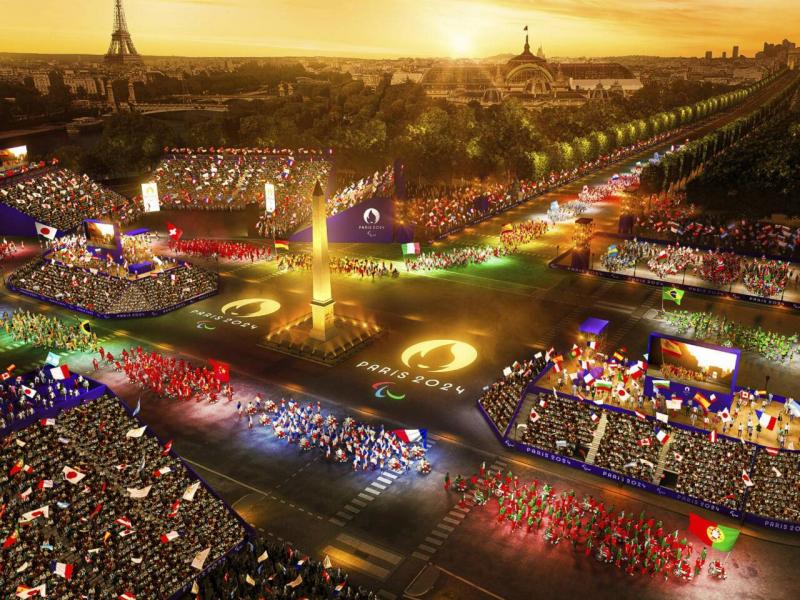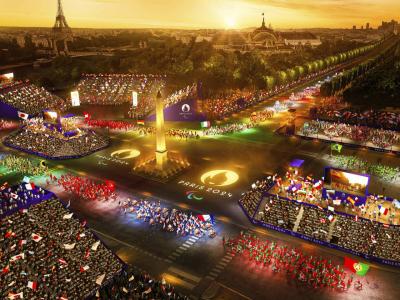With medals made from iron collected from the renovation of the Eiffel Tower and stadium seats made from recycled plastic, the Paris 2024 Olympic Games aim to be the most environmentally friendly Olympics ever. The reasons for this shift are clear; scientists state that extreme heat linked to human-made carbon emissions poses an increasing threat to competitors in the largest global sporting event and beyond. The Paris 2024 Olympics have committed to halving their carbon emissions compared to the average emissions during the London and Rio summer Games. Here are some of Paris 2024's efforts to achieve this goal.
**Construction**
For many, Olympic venues, like the Olympic Water Sports Center in Rio, which have no utility or purpose after the Olympics, represent an extravagance in spending. Paris 2024 seeks to minimize new construction as much as possible. Nearly all venues will use existing seats or temporary seating, often relying on city landmarks as backdrops. Organizers say that replacing low-carbon construction materials with concrete, including the use of sustainably sourced wood, will reduce the Olympic Village's emissions by 30 percent compared to what they refer to as traditional projects, without providing details. Permanent infrastructure accounted for 73 percent of the estimated 467,000 metric tons of carbon emissions resulting from the Olympics between 2018 and 2023. Additionally, 11,000 seats made from recycled plastic have been installed in the two arenas specifically built to host Paris 2024.
**Transport**
Besides construction, transport is expected to be one of the largest sources of emissions during the Games. Organizers state that they will use low-carbon vehicles to transport athletes and official visitors and that all venues will be accessible by bike, on foot, or via public transport. However, Paris does not address emissions caused by the audience traveling to the games. These emissions represented about a third (28 percent) of the 3.3 million metric tons of carbon emitted during the 2012 London Olympics.
**Renewable Energy**
Paris 2024 claims that its venues will utilize renewable energy sources through the electrical grid instead of diesel-fueled generators commonly used in sports venues. About 5,000 square meters of solar panels have been installed on the roof of the water sports center and the Olympic Village, along with a 400-square-meter floating solar farm on the Seine River. At the same time, the Olympic Village features a cooling system that draws water from underground rather than using air conditioning. The state-owned company EDF stated in a press release that it would provide guarantees of origin to link the energy used in the Olympics to six wind power generation sites and two solar power generation sites in France.
**Carbon Offsets**
To offset some emissions that could not be avoided, particularly public air travel, Paris 2024 has purchased carbon credits equal to 1.3 million tons. Each credit represents one ton of emissions reduced or eliminated elsewhere, starting from projects aimed at protecting biodiversity-rich forests in Kenya and Guatemala to improving access to clean cooking facilities in Kenya, Nigeria, and the Democratic Republic of the Congo. Organizers are also spending 600,000 euros (651,720 dollars) on four forestry projects in France to capture 14,500 tons of greenhouse gases. Despite the potential for carbon credits to fund environmental projects, often in the Southern Hemisphere, some credit-generating projects are under scrutiny due to allegations of the misleading benefits they provide. Paris 2024 originally portrayed itself as the first positive Olympics in terms of delivering greater benefits for the climate than any negative impact, indicating plans for emissions removal or reduction or greater compensation than the emissions generated. However, it has since retracted those statements and pledges to reduce impacts and support climate projects.




